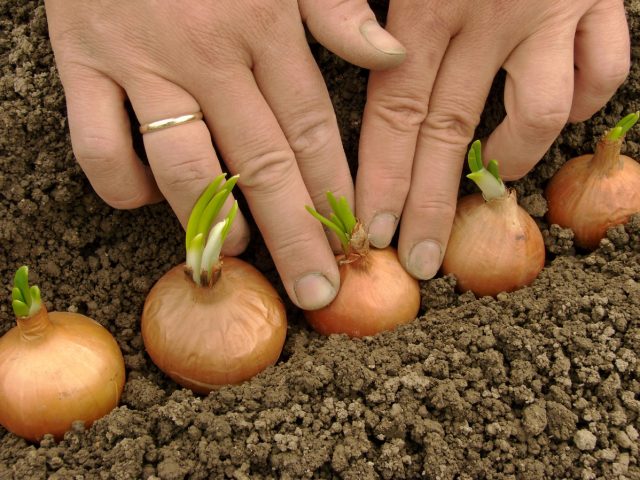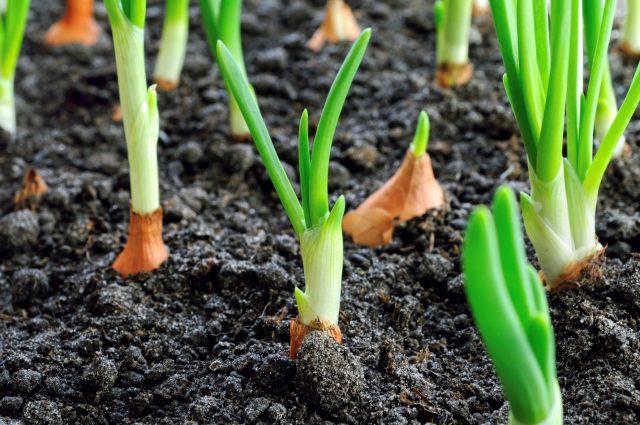Content
It is possible to grow a good harvest of vegetables only on fertile soil that provides the necessary microelements. Fertilization plays an important role. If the soil is completely depleted, this measure will be temporary and will not give a positive result. The most optimal option is to maintain a crop rotation. Plants of the same species take the same nutrient composition and leave spores of fungi and larvae of parasitic insects in the ground. Planting onions after crops affected by the same pests and diseases is not recommended.
General rules for crop rotation
Observance of crop rotation is especially important when a large number of species are planted on a small area. Each of them requires its own soil composition and a set of nutrient minerals and trace elements. During cultivation, the plants are fed with the fertilizers necessary for their growing season, and after harvesting the land is oversaturated with those chemical elements that were not needed. And, conversely, there will be a shortage of substances in the soil that were used during the growing season.
The need to alternate plants of different types on the site is due to the prevention of the spread of infection and parasitic insects. Cultures have their own set of infections and parasites. A fungal infection can completely affect, for example, potatoes and completely not touch onions, or vice versa. Many pests hibernate in the soil in the form of larvae, in the spring, individuals begin to grow actively, if crops of a species suitable for the pest are planted in the garden, there is a serious threat of crop loss.
When planting, take into account the possible influence of allelopathy (interaction). The root system and the aboveground part of plants synthesize and release biological substances that act positively or negatively on neighbors. Onions release phytoncides into the soil, they destroy bacteria that cause rotting. If the culture is planted in the garden for several years, the effect is exactly the opposite, young bulbs are exposed to rot.
General requirements for crop rotation:
- Do not use a planting bed with the same nutrient intake.
- The biological composition released into the soil by the root system is taken into account.
- It is impossible to cultivate species with the same diseases and insects parasitizing them.
- In the spring, early vegetables are not planted after late ripening crops, because the soil did not have time to accumulate a sufficient amount of necessary microelements.
It is recommended to sow green manure after harvesting early vegetables. Buckwheat or clover are good predecessors for onions.
After what culture are onions planted
Onion (Allium) is a light-loving plant that does not tolerate the acidic composition of the soil. With a deficiency of potassium and phosphorus, you should not count on a good harvest. A herbaceous plant is planted to obtain a feather or turnip. The requirements for crop rotation in each case will be different. If planted for feathers, legumes or early radishes are optimal precursors. Recommended predecessors:
- Cabbage. During the growing season, it takes up a large amount of nutrients, but their composition is opposite to that of onions.
- Peas. Low in nutrients, ripens early.
- Tomatoes. The root system of nightshades also produces phytoncides.Their neighborhood is beneficial to each other, they are well suited as predecessors.
- Beet. The root vegetable does not grow on an acidic composition, like Allium. The chemical composition required for vegetation is different for them. Diseases and pests are different.
- Pumpkin. It is allowed as a precursor, but in this case there are more benefits to pumpkin, the onion disinfects the soil, destroys bacteria.
After growing cucumbers, you can use a garden bed for planting a vegetable, but it is pre-fertilized. For growth, cucumbers need a sufficient amount of trace elements, some of them are the same as the requirements of onions, some are not.
Is it possible to plant onions after onions
You can place a plant on one bed for no more than 2 years. In the third year, the place of the garden is changed. If possible, the plant is not planted more than 1 time in one place. Here, the problem is not a lack of nutrition, the culture for the next year of planting can be fed. There is a threat of damage to the young overgrowth by last year's pests and fungal spores accumulated during the season. It will be problematic to save the harvest. The bulb stops developing, the aerial part turns yellow.
Is it possible to plant onions after potatoes
Allium is an early maturing variety, fully ripening in 2 months. If the purpose of planting is not on a feather, the optimal area for growing the onion species is the area vacated after harvesting early potatoes. The main consumption of nutrients in potatoes goes to the formation of tops. During this growing season, the root crop is intensively fed, sufficient amounts of potassium and phosphorus remain in the soil for onion growth. Potato diseases do not affect Allium, they have different pests. Before the onset of frost, the bulb is fully ripe. When required for a crop rotation, the root crop is the best predecessor.
Is it possible to plant onions after carrots
The structure of the root system in crops is different. In carrots, it goes deeper, the consumption of micronutrients comes from the lower layers of the soil. Allium has enough nutrition in the upper soil. They require a different chemical composition for growth, the necessary substances for onions remain intact. Both vegetables have a beneficial effect on each other if they are located in the same garden. The smell of carrot tops repels the onion fly - the main pest of the crop. Phytoncides of a bulbous plant disinfect the soil, destroy bacteria that threaten carrots.
After what crops should not be planted onions
To get a good harvest, it is not recommended to plant the vegetable after a crop that takes away the necessary nutrients. Do not use the site where they planted last season:
- Garlic, since it belongs to the same species, with the same consumption of trace elements from the soil, their diseases and pests also coincide. It is not recommended to plant herbaceous plants on the same bed, they will begin to displace each other, this competition will affect the yield.
- Corn forms a shallow root system that completely depletes the soil.
- The plot where the sunflower was grown is also not suitable, the sunflower leaves behind a soil completely unsuitable for onions.
Conclusion
Planting onions after bulbous crops or plants with the same diseases and pests, as required by crop rotation, is not recommended. The land is depleted, the crop during the growing season will not receive enough of the necessary nutrition. If the garden bed has been used for several years, fungal spores and overwintering larvae of pests accumulate in the soil, the young plant is affected at the beginning of growth, the productivity of the crop will be minimal.











In 2019, the tomatoes turned black, you can plant parsley, dill, onions, radishes or cucumbers on these beds this year. For the second year I have been trying to plant something in the country myself.
Good day!
It is advisable to spill the beds with boiling water or a dark pink solution of potassium permanganate. After 2-3 days, you can safely plant on them.
And don't worry, you will succeed. When a person tries and does something with his soul, he will succeed. And if you don’t know something or don’t know how - write, we will help you.